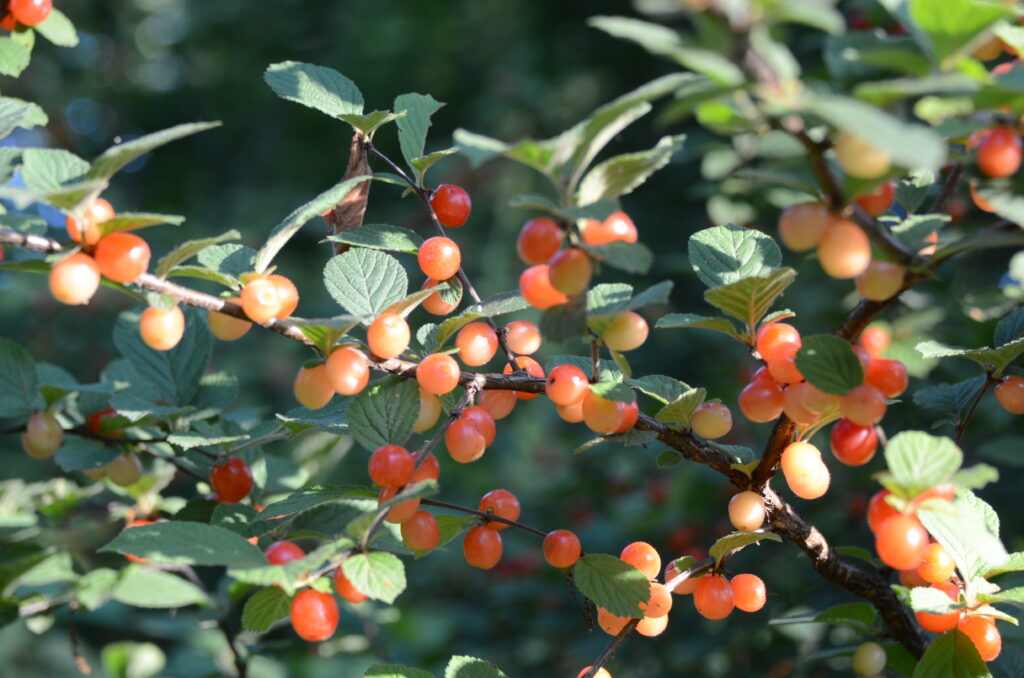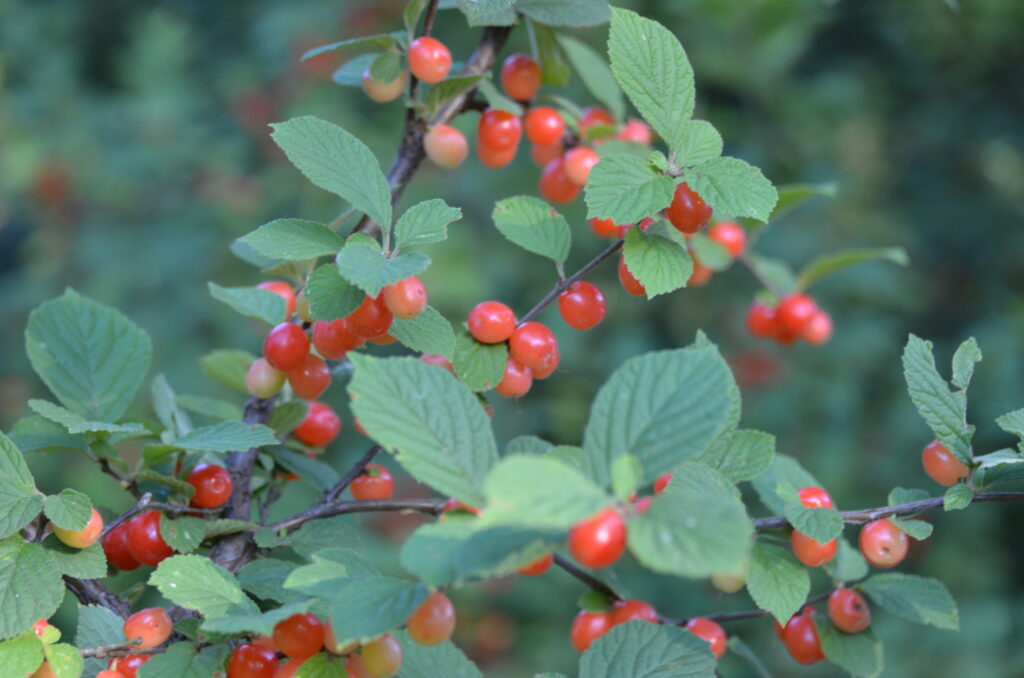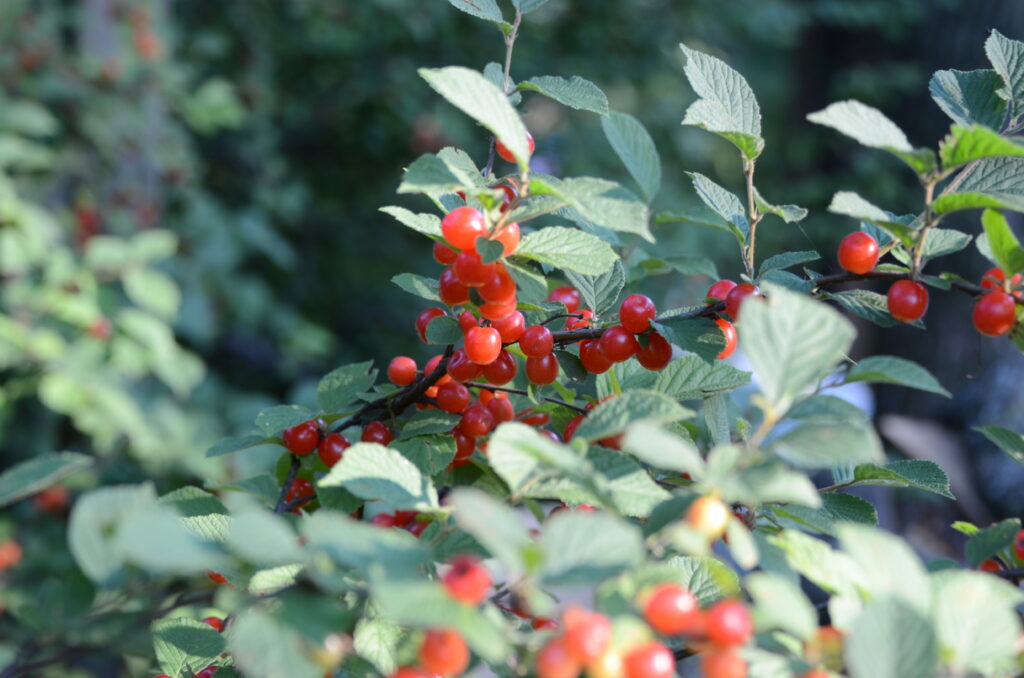Nanking Cherries grow as a medium-sized bush, 4-7 feet tall. Despite their name, they are probably more closely related to plums than cherries. They have a diploid (n=16) chromosome number.
In Spring, bushes are covered with a profusion of small white blossoms from which 1/2 – 3/4″ red fruit develop by late June. Each fruit contains a large seed or pit. Fruits are mildly sour and slightly sweet. They are good for fresh eating, make excellent jams, and are also used for making wine.
Plants are hardy all the way into zone 2. In zone 5, they usually flower late enough to avoid damage from late Spring frosts, so fruiting is quite reliable. They are also drought-resistant.
Nanking cherries spread by root suckers or by branch rooting (layering) and can be grown as single plants or as a hedge. This self-rooting is not frequent enough to consider the plants to be invasive and can be easily stopped by removing any rooted branches.
Since Nanking cherries produce a great deal of fruit, netting or covering the bushes to deter birds is unnecessary unless you experience very high pressure from them. Insect or disease damage is also minimal, so the use of insecticide or anti-microbial sprays is seldom necessary. The only damage that seems to occur regularly is from deer. This occurs in Autumn and early Winter when bucks are cleaning the velvet from their antlers and are sparring with the leafless bushes. The resulting broken branches can be pruned below the breaks and will regrow from that point. If the plant has multiple stems, its survival will not be affected.


